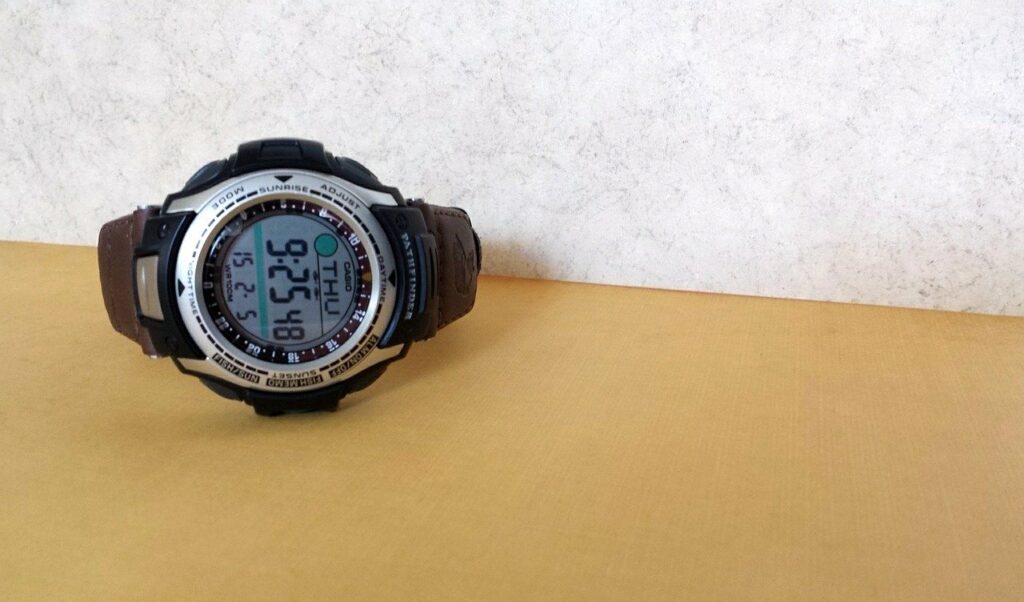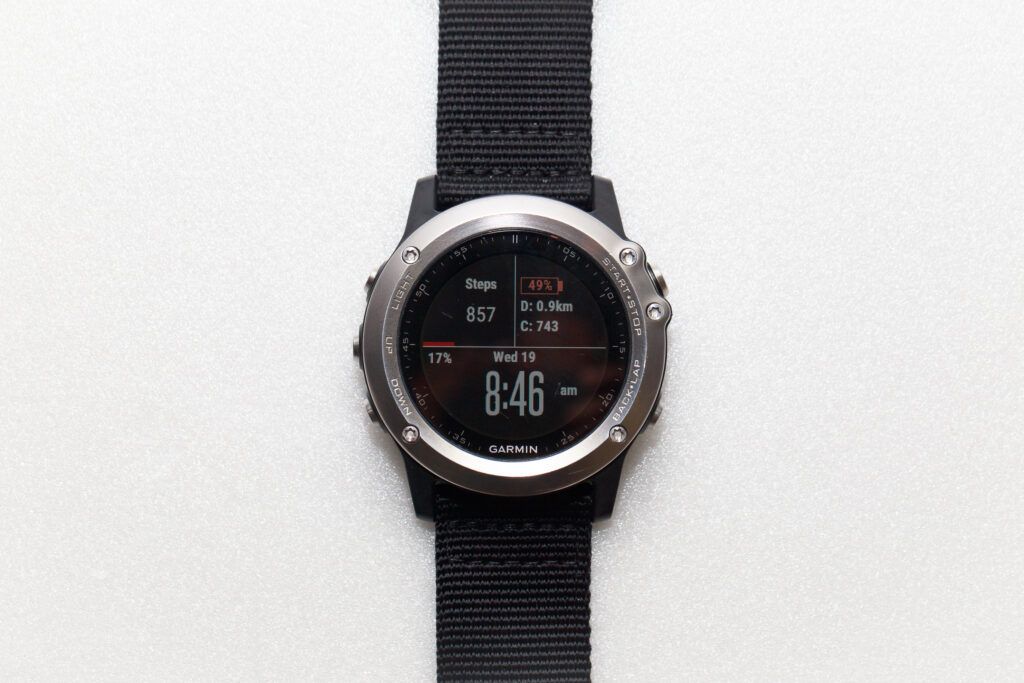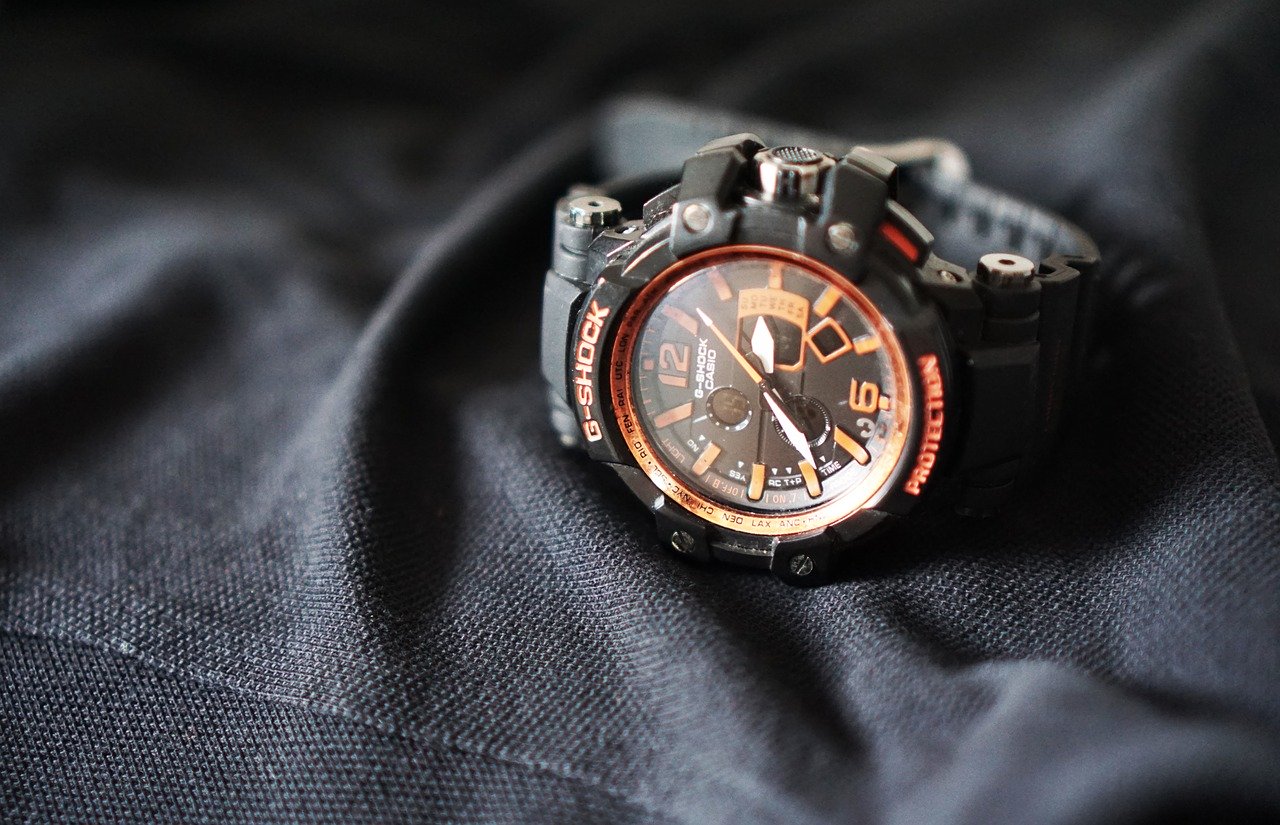Sports watches come in a lot of varieties these days. Depending on what you’re looking for, you can find a great quartz sports watch for about $30.
You can also spend 7 figures on a sophisticated, luxury mechanical timepiece that would make any professional athlete envious.
And then there’s the technically advanced sports watches that not only tell time, but can measure things like heart rate and GPS location during events.
The sports watch category is a vast one, but with a little know-how you should be able to find the right watch to match your fitness needs and style- and this guide is here to help.
In this article, we’ll discuss what a sports watch is and what functions these watches traditionally have. We’ll also go over the different types of sports watches you’ll likely come across in your search.
Let’s start from the beginning.
What Is A Sports Watch?
Simply put, sports watches are watches designed to be worn during physical activity. I know this is a really vague definition, but that’s how it goes.
Some people might group other watch styles (like diving or racing watches) under the “sports watch” umbrella term, but I think those styles deserve their own categories.
After all, unlike sports watches, those categories tend to have more defined characteristics that set them apart from other watches.
Sports watches, on the other hand, come in all kinds of shapes and sizes and their functions can vary greatly.
The only thing they have to really have in common is that they are designed to withstand and function during some kind of exercise.
The world’s first sports watch is credited to Jaeger-LeCoultre, who’s Reverso was designed to withstand Polo matches. The watch came with a square case that can be rotated backwards to protect the crystal and a steel bracelet that could survive any bumps and hits that might occur during a match.
The Reverso became very popular amongst non-Polo players for its elegant style- in fact, the Reverso line is still going strong today.
Although the times have changed a lot since the Reverso made its first appearance, one thing that hasn’t changed is that athletes still need the ability to keep time during events.
Sports watches these days usually offer more advanced functions too. These include:
Chronograph
A chronograph is just a more elegant way of saying stopwatch. Almost all sports watches, both mechanical and quartz, will offer a chronograph function.
The stopwatch function is one of the most important features of a sports watch and one of the key elements that make a watch sports compatible.
How many sporting events require timing stuff? Pretty much all of them.
Timer
You’ll find timers on most quartz sports watches. Like the timer you’d set on an oven, these timers will count down from whatever time you set.
I use the timer function on my Timex often during my workouts. If I’m doing a circuit, I can set the timer for say, 60 sec, and exercise until the timer goes off.
Then I know it’s time to move to the next exercise or rest.
Calendar
Many sports watches, mechanical or quartz, come with calendars that keep track of the date. More advanced smart sports watches, will even let you access the calendars from your smart phones and see events that are scheduled.
Waterproof
Any respectable sports watch should be waterproof to some degree. Many can go down at least 100 m and be fine. Others, like the smart watches, are more water resistant, meaning they can handle hand washing and sweat, but aren’t designed for submersion.
Although I think the Apple Watch 5 is waterproof to 50 feet.
Durable Band
Sports watches should come with comfortable, durable bands that can handle sweat and being jostled around without breaking down.
These watches usually come with rubber bands, although luxury mechanical watches will often come with metal bracelets.
Easy To Read Dial
The dial, or face of the watch should be easy to read during activity. This isn’t an issue with digital watches, but mechanical watches should come with large numerals that are easy to see.
Sports watch dials should also have luminous phosphorescent (lume) applied to the hands to make them visible in the dark (digital watches have a light button you can push to see in the dark).
Durable Case
The case holding all of the inner-workings of the sports watch needs to be tough enough to take a beating. Mechanical watches will often come with stainless steel cases.
Quartz watches are usually made out of durable resins that are strong and light-weight.
Types of Sports Watches
The way I see it, there are 3 major types of sports watches: quartz, mechanical, and health trackers (smart).
I don’t think these designations are written in stone anywhere, but I think it makes sense to organize em this way when trying to figure out which type of watch you’re looking for.
Quartz Sports Watches

Quartz, or battery operated, sports watches are the most common. These digital watches are what a lot of us think of when we hear the term sports watch.
Personally, the classic Timex comes to mind.
These watches are great because they’re tough, affordable, and easy to use. In terms of functionality, they make it really easy to swap through the different timer and stopwatch functions seamlessly during a workout.
The digital screen is easy to see while moving, making them a great option for runners or swimmers.
I’ve gone through 2 Timex sports watches (Ironman Classic) over the last 12 years. Needless to say, these things are built to last. And if you’re budget is tight, quartz watches make sense.
You can get a great sports watch for about $30.
Mechanical Sports Watches

Although many of us picture the classic digital sports watch, there are a ton of mechanical models out there too. Being mechanical, these watches don’t use a battery and won’t be digital.
Mechanical watches are going to cost more (probably a lot more depending on brand) and will be a little heavier because of the metal components.
Depending on your sport or activity, these watches could be a little harder to use. I know I wouldn’t want to try to time myself on a run using a mechanical sports watch.
But if you’re going golfing or sailing, they can work just fine (and look great too).
Most luxury watchmakers have sports lines. Rolex’s Yacht-Master’s are a good example of what luxury sports watches can look like.
Richard Mille is another big name in the luxury sports watch scene, offering really stylish looking watches (although I’m not sure how functional some of them would be).
With mechanical watches, you get the style and luxury, but lose some of the ease of use and function of the quartz sports watch. All depends on your sport and what you’re going for.
Fitness Trackers

Technically speaking, I think it’s fare to count fitness trackers as sports watches- they tell time, they’re durable, and they’re designed to be worn during all kinds of physical activities.
Fitness trackers definitely fall into their own category though, because they have specific functions that traditional sports watches don’t have.
These devices are designed to keep track of different metrics as you exercise. Most act as pedometers, as well as heart rate monitors too.
Many have GPS tracking capabilities, so you can plan out runs or hikes and see your distances and routes on your phone or computer.
These sports watches can be stand alone fitness trackers, like the Fitbits and Garmins, but many smart watches also have these capabilities (like the Apple Watches).
If you’re looking for a higher-tech sports watch that can connect with your smart phone, fitness trackers are a great choice.
They’ve become a lot more affordable recently, with many costing only $100 or less.
Final Thoughts
Sports watches have been around for decades. These watches are designed specifically to withstand the punishment that occurs during physical activity.
Although these watches come in all shapes and sizes, most sports watches will come with a chronograph, a large, easy to read dial, and be made out of durable materials.
Sports watches can be mechanical or quartz and some can even track fitness metrics and connect with smart devices.
When looking for a sports watch, deciding which type you want is a great place to start- it will definitely help you narrow down your search.
Mechanical sports watches make sense if you’re looking for a watch that looks more stylish, but they might not make the best choices for use during fast paced activities like running (harder to read).
Quartz watches are super functional and easy to use during all kinds of physical activity, but they aren’t usually as stylish.
In the end, each type has their advantages and disadvantages – finding the right sports watch all comes down to knowing what you plan on using it for.

